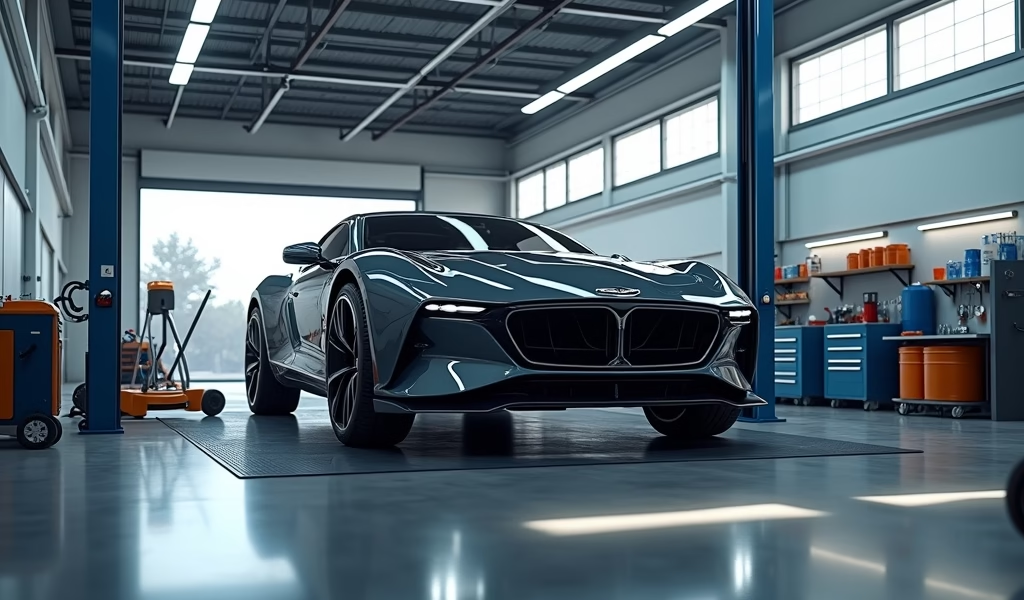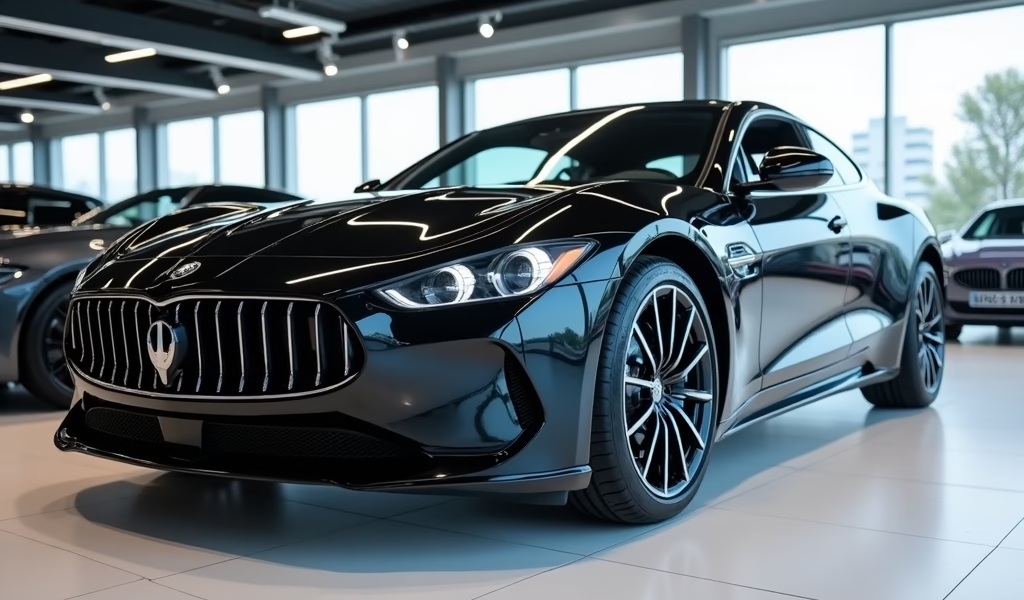Overview
This article outlines seven essential vehicle maintenance practices for 2024 models, including following manufacturer schedules, maintaining fluids, proper tire care, battery maintenance, using quality parts, understanding vehicle technology, and protecting appearance. The author, a master mechanic with 25 years of experience, emphasizes that consistent maintenance is not just an expense but an investment that preserves vehicle performance and prevents costly repairs.
Table of Contents
- Understanding Modern Vehicles: Why Maintenance Matters
- Follow the Manufacturer’s Maintenance Schedule
- Keep Those Fluids Clean and Topped Off
- Don’t Neglect Your Tires
- Battery Care: The Heart of Your Electrical System
- Why Quality Parts Matter
- Understanding Your Vehicle’s Technology
- Protecting Your Car’s Appearance
- Conclusion: Preserving Your Investment
- Frequently Asked Questions
Understanding Modern Vehicles: Why Maintenance Matters
As a master mechanic with 25 years under my belt, I’ve watched 2024 cars for sale roll onto showroom floors with technology that would’ve seemed like science fiction when I started turning wrenches. These aren’t just transportation devices anymore—they’re rolling computers with thousands of interconnected systems.
The 2024 models represent a quantum leap in automotive engineering, but here’s the truth: even the most sophisticated machines need regular care. In fact, today’s vehicles require more attentive maintenance than their predecessors because their advanced systems have less tolerance for neglect.
I’ve seen too many drivers drop $40,000+ on a beautiful new vehicle, then balk at spending a fraction of that on proper maintenance. It’s like buying a thoroughbred racehorse and feeding it fast food—you’re undermining all that engineering excellence!
Whether you’re browsing new car options for 2024 or have already made your purchase, these seven maintenance tips will help protect your investment and keep your vehicle running like new for years to come.
Follow the Manufacturer’s Maintenance Schedule
Those maintenance intervals in your owner’s manual? They’re not suggestions—they’re prescriptions written by the very engineers who designed your vehicle. Skip them at your peril.
Most 2024 vehicles have maintenance schedules that are more sophisticated than ever before. They account for everything from driving conditions to fuel quality. Your vehicle’s onboard computer is constantly monitoring dozens of parameters to determine exactly when service is needed.
Key service intervals typically include:
- Initial break-in service (usually 1,000-5,000 miles)
- Regular oil changes (typically 7,500-10,000 miles with synthetic oil)
- Major services at 30,000, 60,000, and 90,000 miles
- Timing belt/chain inspection or replacement (60,000-100,000 miles)
One of the biggest myths I hear in my shop: “Modern cars need less maintenance.” The truth? They need different maintenance. Skip that 30,000-mile transmission service, and you might be looking at a $4,000 replacement bill down the road instead of a $200 fluid exchange.
Pro tip: Many 2024 models include complimentary maintenance for the first few years. Take advantage of every single service—you’re leaving money on the table otherwise.

Keep Those Fluids Clean and Topped Off
Your car runs on fluids—it’s that simple. Oil, coolant, transmission fluid, brake fluid, power steering fluid, even windshield washer fluid—they all play crucial roles in keeping your vehicle running smoothly.
Engine oil is the lifeblood of your vehicle. Today’s engines run hotter and with tighter tolerances than ever before. The synthetic oils specified for most 2024 models are engineering marvels in their own right—but they don’t last forever. Even if your vehicle has an oil life monitor, physically check your dipstick monthly.
Coolant technology has evolved dramatically. Most 2024 models use extended-life coolant formulations that should never be mixed with conventional green antifreeze. Using the wrong coolant is like putting diesel in a gasoline engine—a recipe for disaster.
Many transmission issues I diagnose stem from neglected fluid. Even if your manufacturer claims “lifetime” fluid (a myth I could rant about for hours), I recommend a transmission fluid service every 60,000 miles. I’ve rebuilt too many “lifetime fluid” transmissions to believe the hype.
Brake fluid is hygroscopic—it absorbs moisture from the air over time. That moisture lowers the fluid’s boiling point and corrodes internal brake components. Most manufacturers recommend changing it every 2-3 years regardless of mileage.
According to research from the Car Care Council, 22% of vehicles have low or contaminated fluid, contributing to major system failures. Five minutes checking fluid levels monthly can save thousands in repairs.
Don’t Neglect Your Tires
Your tires are literally where the rubber meets the road. Everything else on your vehicle—that precision-engineered engine, those sophisticated electronics, that carefully calibrated suspension—it all depends on four patches of rubber about the size of your hand.
Tire technology in 2024 models has advanced tremendously. Many feature run-flat capabilities, noise-reducing compounds, and specialized tread patterns designed for specific performance characteristics. But they still need your attention.
Proper tire maintenance includes:
- Monthly pressure checks (when tires are cold)
- Regular rotation every 5,000-7,000 miles
- Alignment checks if you notice uneven wear or pulling
- Seasonal tire changes if you live in areas with extreme weather
One of the most common mistakes I see: relying solely on the Tire Pressure Monitoring System (TPMS). Most systems only alert you when pressure is dangerously low—typically 25% below recommended pressure. By that point, you’ve already experienced reduced fuel economy, compromised handling, and accelerated tire wear.
A good quality tire gauge costs less than $10. Use it monthly, and you’ll extend tire life by thousands of miles. Your family car’s safety depends on proper tire maintenance more than almost any other factor.
Battery Care: The Heart of Your Electrical System
Today’s vehicles are more reliant on electrical systems than ever before. A 2024 model typically has dozens of computers and control modules that require consistent, clean power. Your battery isn’t just for starting anymore—it’s the foundation of your vehicle’s entire electrical architecture.
Most 2024 models come with absorbed glass mat (AGM) batteries rather than traditional flooded cell batteries. They deliver more power, handle deep cycling better, and last longer—but they’re also more expensive to replace.
Battery maintenance tips:
- Keep terminals clean and tight (corrosion restricts current flow)
- Have your charging system tested annually
- If you drive infrequently, consider a quality battery maintainer
- Replace your battery proactively at 4-5 years, even if it seems fine
I’ve seen too many customers strand themselves waiting for a battery to fail completely. Modern vehicles often exhibit strange electrical gremlins before a battery dies outright—random warning lights, infotainment glitches, even transmission shifting issues can all be battery-related.
Pro tip: If your 2024 model has a start-stop system, it requires a specialized AGM battery. Using a standard battery as a replacement will lead to premature failure and could damage your electrical system. This is one area where OEM or equivalent quality is absolutely essential.

Why Quality Parts Matter
I understand the temptation to save a buck on maintenance parts. But after rebuilding thousands of engines and transmissions over my career, I can tell you with absolute certainty: quality parts are worth every penny.
This is especially true for 2024 models, which often feature cutting-edge technologies that rely on precise specifications. The $2 savings on that bargain oil filter might cost you $5,000 when fragments break off and clog your oil passages.
Areas where quality is non-negotiable:
- Filters (oil, air, fuel, cabin air)
- Spark plugs (especially in direct injection engines)
- Braking components (pads, rotors, hydraulics)
- Belts and hoses (especially timing belts)
This doesn’t mean you must use dealer parts exclusively. Many aftermarket manufacturers produce equal or better quality parts. Research brands, read reviews, and remember that price often (though not always) reflects quality.
Consider this: most newer car brands engineer their vehicles with 100,000+ mile lifespans in mind. Using substandard parts undermines that potential longevity. Consumer Reports studies consistently show that proper maintenance with quality parts is far less expensive than addressing preventable major repairs.
Understanding Your Vehicle’s Technology
Today’s 2024 models aren’t just mechanical marvels—they’re rolling supercomputers. The average new vehicle contains more than 100 million lines of code controlling everything from fuel injection to climate control.
This technology provides incredible benefits, but it requires a different maintenance mindset. Software updates are now as important as oil changes. Many manufacturers release regular updates that improve performance, fix bugs, and even add new features.
Warning lights have evolved too. That “check engine” light could indicate anything from a loose gas cap to impending engine failure. Ignoring it is gambling with your vehicle’s health. Modern scan tools can read these codes, but interpreting them often requires expertise.
Technology maintenance tips:
- Keep your vehicle’s software updated (many 2024 models do this automatically via Wi-Fi)
- Don’t ignore warning lights—get them diagnosed promptly
- Consider investing in a quality OBD-II scanner for preliminary diagnostics
- Maintain your battery health to prevent electrical system issues
Some owners worry that technology makes DIY maintenance impossible. While some tasks have become more complex, basic maintenance remains accessible. The key is understanding what you can handle yourself and when to seek professional help.
Remember: resetting warning lights without fixing the underlying issue is like putting tape over your smoke detector because the beeping annoyed you. The warning exists for a reason.
Protecting Your Car’s Appearance
Maintenance isn’t just about what’s under the hood. Your vehicle’s exterior and interior deserve attention too. Modern automotive finishes and materials are remarkably durable, but they still require care to maintain their appearance and value.
The paint on 2024 models often incorporates self-healing clear coats and UV protection, but environmental contaminants can still cause damage. Bird droppings, tree sap, and industrial fallout are particularly harmful—their acidic nature can etch through clear coat if left unaddressed.
Appearance maintenance essentials:
- Regular washing (biweekly is ideal, more frequently in harsh environments)
- Seasonal waxing or ceramic coating application
- Interior conditioning to prevent UV damage and cracking
- Prompt cleaning of spills and stains
Consider a professional paint protection film on high-impact areas if you’ve invested in a premium 2024 model. These clear films have become remarkably good at preserving finish while remaining virtually invisible.
Interior materials in 2024 vehicles often feature advanced synthetics and natural materials that require specific care. Leather conditioning, fabric protection, and UV-blocking window film can all extend interior life significantly.
Remember: appearance maintenance isn’t just cosmetic. Rust prevention, particularly in regions that use road salt, is structural protection that prevents costly body repairs later.
Conclusion: Preserving Your Investment
Shopping for 2024 cars for sale is exciting—the technology, performance, and features available today are truly remarkable. But ownership is a long-term relationship, and like any relationship, it thrives on consistent care and attention.
The maintenance tips I’ve shared come from decades of seeing what works—and what fails. I’ve rebuilt engines that should have lasted 300,000 miles but failed at 80,000 due to neglect. I’ve also serviced vehicles with half a million miles that still run like new because their owners followed these principles.
Modern vehicles are more reliable than ever, but they’re not maintenance-free. The complexity that delivers their impressive performance also means that failures, when they do occur, are often more expensive to repair.
Think of maintenance as an investment, not an expense. Every dollar spent on preventive care typically saves $3-5 in repairs down the road. More importantly, it ensures your 2024 model delivers the performance, reliability, and driving pleasure you paid for.
Your vehicle takes care of you every day—returning the favor isn’t just good economics, it’s good stewardship of a remarkable piece of engineering. Trust me, your car will thank you with years of trouble-free service.
Frequently Asked Questions
How often do 2024 models need oil changes?
Most 2024 vehicles with synthetic oil can go 7,500-10,000 miles between changes. Always follow your specific manufacturer’s recommendations as some turbocharged or high-performance engines may require more frequent service.
Are extended warranty plans worth it for 2024 models?
It depends on the specific vehicle and your risk tolerance. Research the reliability record of your specific model and consider manufacturer-backed warranties over third-party options.
Can I still do DIY maintenance on 2024 vehicles?
Yes, but with limitations. Basic tasks like fluid checks, filter replacements, and tire maintenance remain DIY-friendly, while more complex systems may require dealer-level diagnostic equipment.
How much should I budget annually for maintenance on a new 2024 vehicle?
Plan for 1.5-2% of the vehicle’s purchase price annually for maintenance. The first few years will be less expensive (often covered by warranty), while costs typically increase in years 4-7.
Are 2024 electric vehicles cheaper to maintain than gas vehicles?
Generally yes, with 30-40% lower maintenance costs on average. EVs eliminate many traditional service items like oil changes and have significantly fewer moving parts, though battery care becomes important.

